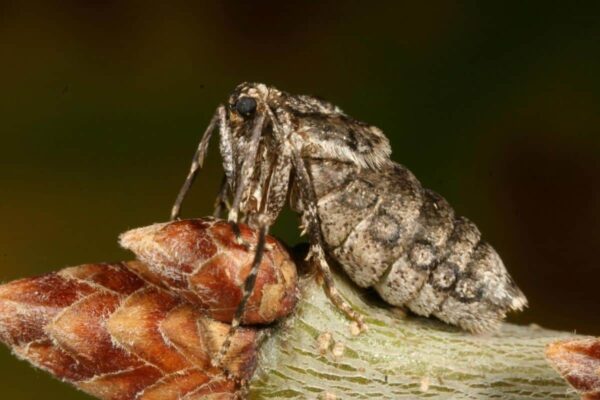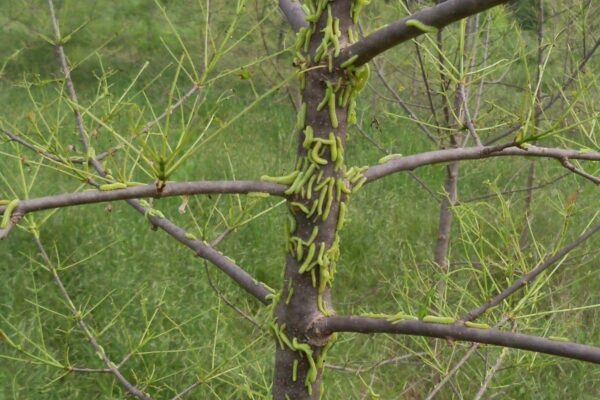Winter moth
About This Species
Winter moths are native to Europe and Russia. They were introduced to Canada during the 1930s in the Maritimes and were first reported on Vancouver Island in 1970.
Winter moth caterpillars hatch in late spring and feed on leaves and buds from a variety of tree species, including Apples (Malus spp.), Aspens & Poplars (Populus spp.), Birches (Betula spp.), Maples (Acer spp.), and Oaks (Quercus spp.). They are native to Europe and Russia. They will also feed on leafy shrubs, including Common snowberry (Symphoricarpos albus) and agricultural cranberries (Vaccinium macrocarpon). They are considered a threat to sensitive Gary Oak ecosystems on Southern Vancouver Island and are occasional pests in cranberry bogs. Winter moth are designated as a Management species by the BC Provincial Priority Invasive Species List.
How to Identify
Male and female adult Winter moths are sexually dimorphic, meaning the sexes have different physical traits. The female moths have lost the ability to fly, their wings are small and shriveled. They are mottled grey with a fat abdomen and large black eyes. The male moths vary in colour, from tan to mottled grey. Their wings have little fringes of hair at their base.
Winter moth caterpillars are green and hairless, with thin yellow lines going down their body. Upon hatching, they are only a few millimeters long, but they quickly grow to several centimeters long. Young caterpillars may travel between host plants using a strategy called ‘ballooning’, where they extend a long line of silk from glands which carries them through the air like a sail, pushed through a combination of wind and electrostatic forces.

Take Action
Prevention is the best approach.
-
If you need advice about invasive species on your property or you are concerned about reported invasives in your local area, contact your local government or regional invasive species organization.
Prevention tips
Because the female moths can’t fly, a common trapping method is to place a band of sticky material around the base of a tree trunk. Female moths trying to climb up the tree to find a mate get stuck on these bands. You may see these around Victoria and Metro Vancouver, where outbreaks of these moths are most common. Please do not disturb these bands.
REPORT TO PROTECT BC’S BIODIVERSITY

Use the app
Observe and report to protect BC’s biodiversity

Report through this website
Use our form to tell us what you’re seeing and where.





